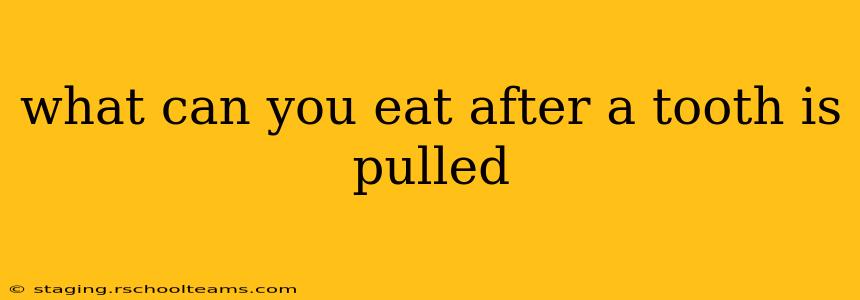What Can You Eat After a Tooth is Pulled? A Guide to Post-Extraction Nutrition
Having a tooth pulled can be a bit of a disruptive experience, and knowing what you can eat afterward is a common concern. The key is to focus on soft, easily digestible foods that won't irritate the extraction site. Ignoring this crucial post-operative diet can lead to complications and prolong healing. This guide will help you navigate your post-extraction meals with ease and ensure a smooth recovery.
What to Eat Immediately After Tooth Extraction:
For the first 24 hours, it's best to stick to liquids and very soft foods. This allows the blood clot to form properly, a crucial step in the healing process. Avoid anything that requires vigorous chewing.
- Broths and Soups: Clear broths, chicken noodle soup (without large noodles), and vegetable broths are excellent options. Make sure they're lukewarm to avoid further irritating the area.
- Smoothies: Blend fruits, vegetables, yogurt, and protein powder for a nutritious and easy-to-consume meal. Avoid using straws, as suction can dislodge the blood clot.
- Applesauce: Unsweetened applesauce is a soft, easily digestible option.
- Yogurt: Plain yogurt is a good source of probiotics, which can aid in overall health and recovery.
- Pudding: Creamy pudding provides nourishment without requiring much chewing.
What Can You Eat After the First 24 Hours?
Once the initial 24 hours have passed and the initial healing has begun, you can gradually introduce more foods into your diet. Still, it's crucial to avoid anything too hard, crunchy, or spicy.
- Mashed Potatoes: A classic comfort food, mashed potatoes are soft and easy to swallow.
- Scrambled Eggs: Soft scrambled eggs offer a good source of protein.
- Oatmeal: Cooked oatmeal is a gentle, nutritious choice.
- Soft Cooked Pasta: Well-cooked pasta, without hard pieces, is acceptable.
- Well-Cooked Vegetables: Steamed or pureed vegetables provide valuable nutrients. Avoid anything tough or fibrous.
- Fish: Flaky fish like salmon or cod, cooked until tender, are good protein sources.
What Foods Should You Avoid After a Tooth Extraction?
Certain foods should be avoided entirely in the days following a tooth extraction to prevent complications and ensure proper healing.
- Anything Hard or Crunchy: This includes nuts, seeds, chips, hard candies, popcorn, and raw vegetables. These can dislodge the blood clot or irritate the extraction site.
- Spicy Foods: Spicy foods can cause inflammation and discomfort in the affected area.
- Alcohol: Alcohol can increase bleeding and hinder healing.
- Straws: Avoid using straws, as suction can dislodge the blood clot.
- Hot Foods: Avoid excessively hot foods, as they may irritate the extraction site.
What About Dairy Products?
Some believe dairy products should be avoided after a tooth extraction, but there is no definitive scientific evidence supporting this claim. However, if dairy products upset your stomach, it's best to avoid them.
What if I’m Still Hungry?
If you're still hungry despite following these guidelines, you can always consult with your dentist or oral surgeon. They can offer personalized advice based on your specific situation and recovery progress.
How Long Should I Follow This Diet?
Generally, you should follow this modified diet for at least a week, but you should consult your dentist for advice tailored to your specific case.
Remember, maintaining a healthy diet after a tooth extraction is crucial for a speedy and comfortable recovery. Prioritize soft, nutrient-rich foods, and always listen to your body. If you experience any significant pain, bleeding, or swelling, contact your dentist immediately.
